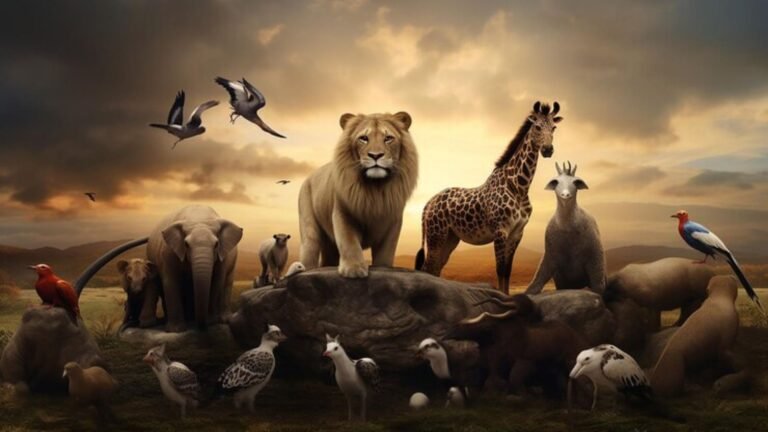Mammals are a diverse group of animals, and among them, some have surprisingly short names—just three letters. This article will explore several fascinating mammals with three-letter names, delving into their characteristics, habitats, and interesting facts. Whether you’re a nature enthusiast or just curious, this guide will broaden your understanding of these unique creatures.
The Unique World of Three-Letter Mammals
Three-letter mammals might seem rare, but they offer a glimpse into the diversity of the mammalian family. These animals range from common pets to exotic wildlife, each with distinct traits that make them fascinating to study.
Why Focus on Three-Letter Mammals?
The brevity of their names doesn’t diminish their significance in the animal kingdom. By focusing on mammals with three letters, we can appreciate the simplicity and beauty of their existence. Moreover, it encourages curiosity about less-known species, fostering a greater appreciation for biodiversity.
A Closer Look at Mammals with 3 Letters
Cat
Overview
The cat is one of the most well-known mammals globally, loved for its companionship and independent nature. These small, carnivorous mammals belong to the family Felidae and are known for their agility, sharp retractable claws, and keen senses.
Characteristics
Size: Domestic cats typically weigh between 5 to 20 pounds.
Lifespan: The average lifespan of a cat is around 12-15 years, though many live into their twenties.
Behavior: Cats are solitary hunters, often engaging in playful behaviors that mimic hunting.
Interesting Facts
Cats can make over 100 different sounds, while dogs only make about 10.
They have a unique grooming behavior that keeps their fur clean and regulates body temperature.
Dog
Overview
Dogs, often referred to as “man’s best friend,” are domesticated mammals known for their loyalty and companionship. They belong to the Canidae family and have been bred for various roles, including working, hunting, and companionship.
Characteristics
Size: Dogs come in various sizes, from tiny teacup breeds to giant breeds like Great Danes.
Lifespan: The lifespan of a dog varies significantly by breed, typically ranging from 10 to 15 years.
Behavior: Dogs are social animals that thrive on interaction with humans and other dogs.
Interesting Facts
Dogs have an exceptional sense of smell, estimated to be between 10,000 to 100,000 times more sensitive than humans.
They can understand a range of words and commands, making them highly trainable.
Bat
Overview
Bats are the only flying mammals, belonging to the order Chiroptera. They are often misunderstood and associated with darkness, but they play crucial roles in ecosystems.
Characteristics
Size: Bats range from the tiny bumblebee bat, measuring about 1.1 inches, to the larger fruit bats with wingspans over 5 feet.
Lifespan: Many bat species live longer than expected, with some individuals reaching over 30 years.
Behavior: Bats use echolocation to navigate and hunt for insects at night.
Interesting Facts
Bats are essential for pollination and seed dispersal, particularly in tropical environments.
They consume large quantities of insects, with some species eating up to 1,200 mosquitoes in one hour.
Rat
Overview
Rats are medium-sized rodents belonging to the genus Rattus. They are highly adaptable and found in various environments, often cohabitating with humans.
Characteristics
Size: Adult rats typically weigh between 0.5 to 1 pound, depending on the species.
Lifespan: The average lifespan of a rat is 2 to 3 years in the wild but can be longer in captivity.
Behavior: Rats are social creatures that thrive in groups and exhibit complex behaviors.
Interesting Facts
Rats are incredibly intelligent and can be trained to perform various tasks.
They have a remarkable ability to squeeze through tiny openings, which is why they are often found in urban areas.
Emu
Overview
Although technically a bird, the emu is a large, flightless bird often included in discussions about mammals due to its unique characteristics. It belongs to the ratite family and is native to Australia.
Characteristics
Size: Emus can stand up to 6 feet tall and weigh between 50 to 120 pounds.
Lifespan: They can live for about 10 to 20 years in the wild.
Behavior: Emus are known for their curious nature and can run at speeds of up to 30 miles per hour.
Interesting Facts
Emus can travel long distances and are known to cover up to 9 miles in a single day.
They are omnivorous, feeding on a diet of plants, seeds, and insects.
Importance of Protecting These Mammals
Biodiversity and Ecosystem Health
Every mammal plays a crucial role in maintaining the balance of its ecosystem. Protecting species like cats and dogs helps preserve biodiversity, as these animals contribute to their environments in various ways, such as pest control or seed dispersal.
Human Connection
Many three-letter mammals, especially domestic species like cats and dogs, enhance human lives. They provide companionship, emotional support, and even therapeutic benefits, highlighting the need to protect and care for these animals.
Conclusion
In this exploration of fascinating mammals with three letters, we’ve discovered the unique traits and ecological importance of various species, including cats, dogs, bats, and rats. Each of these mammals contributes to our world in meaningful ways, reminding us of the incredible diversity within the animal kingdom.
ALSO READ:Embrace A Catless Life: Benefits and Tips for Pet-Free Living
FAQs
What are some common three-letter mammals?
Common three-letter mammals include cat, dog, bat, and rat.
Why are three-letter mammals significant?
Three-letter mammals are significant because they represent the diversity of the mammalian family and highlight unique traits that often go unnoticed.
How do bats contribute to the ecosystem?
Bats play a crucial role in controlling insect populations, pollinating plants, and dispersing seeds, making them vital for ecological balance.
Are there any endangered three-letter mammals?
Yes, some bat species are endangered due to habitat loss and disease, emphasizing the need for conservation efforts.
Can domestic cats and dogs live in the wild?
While domestic cats and dogs can survive in the wild, they often struggle to adapt fully. Feral populations can cause ecological imbalances by preying on native wildlife.

